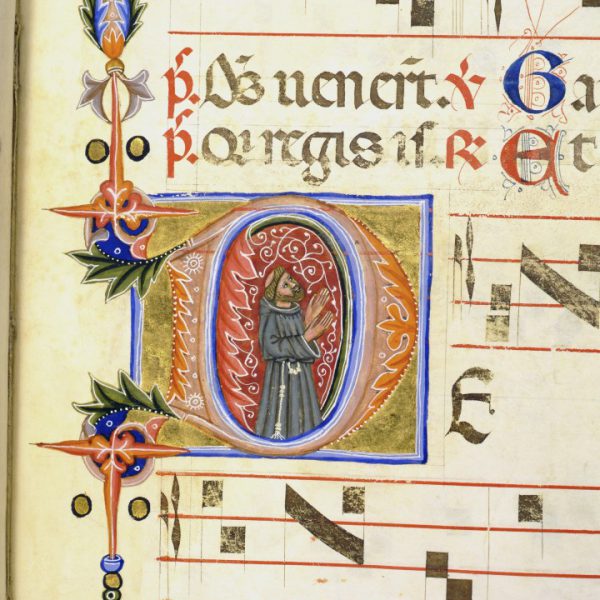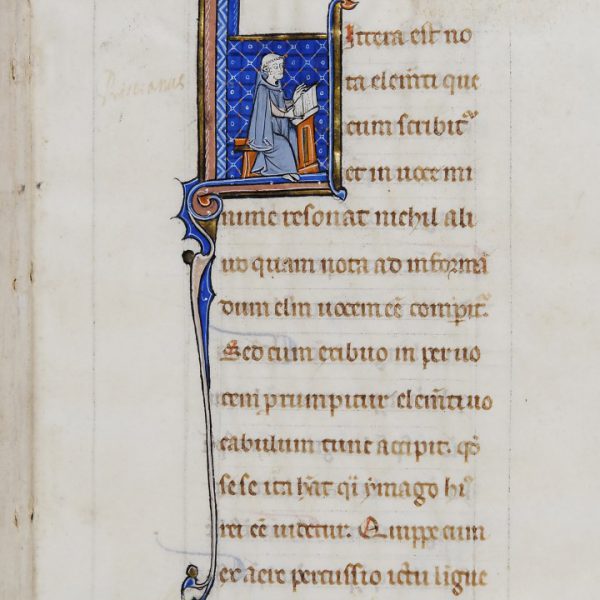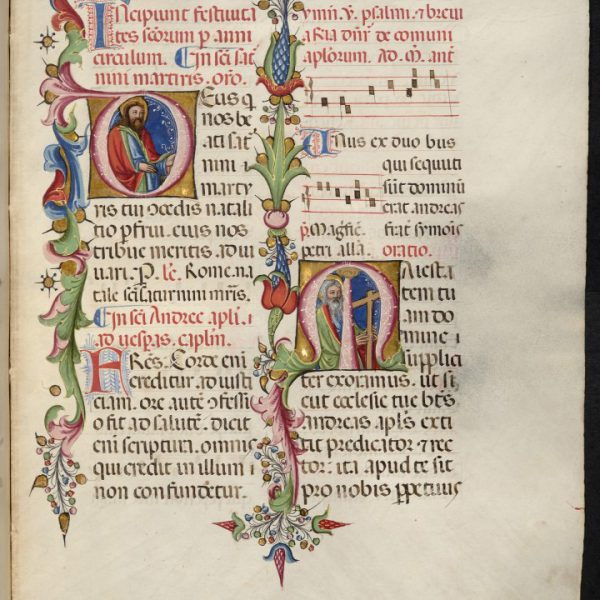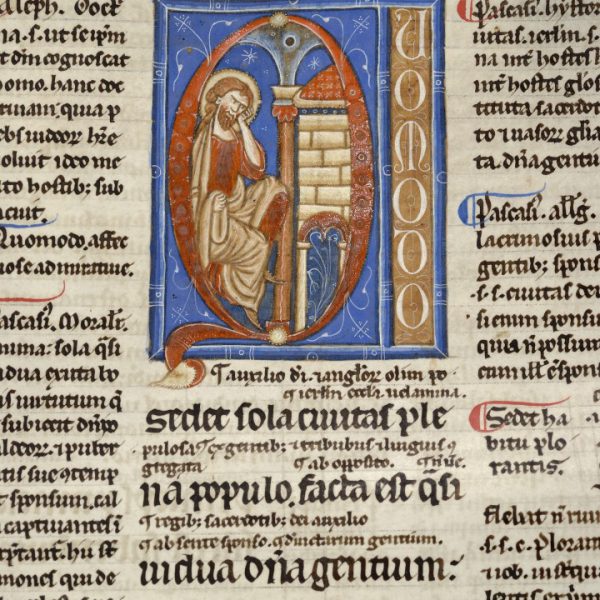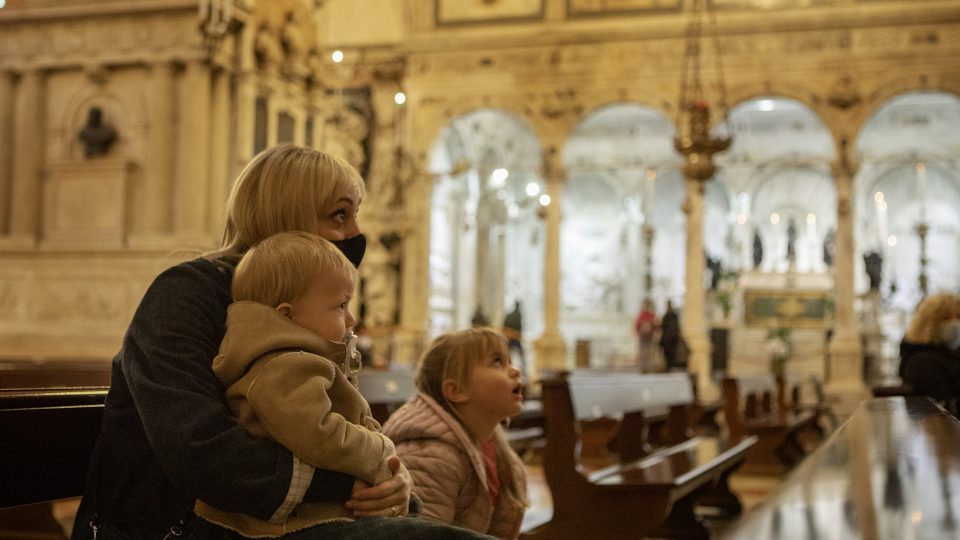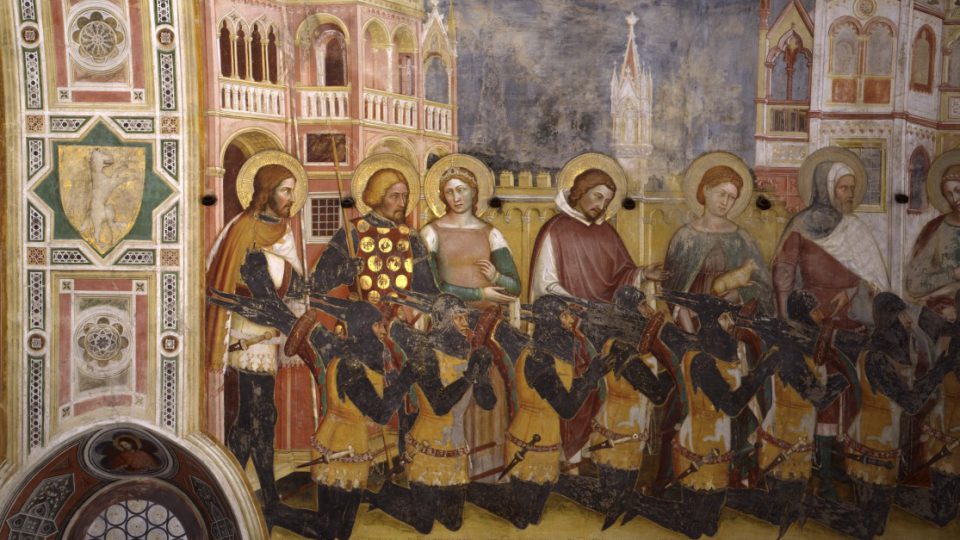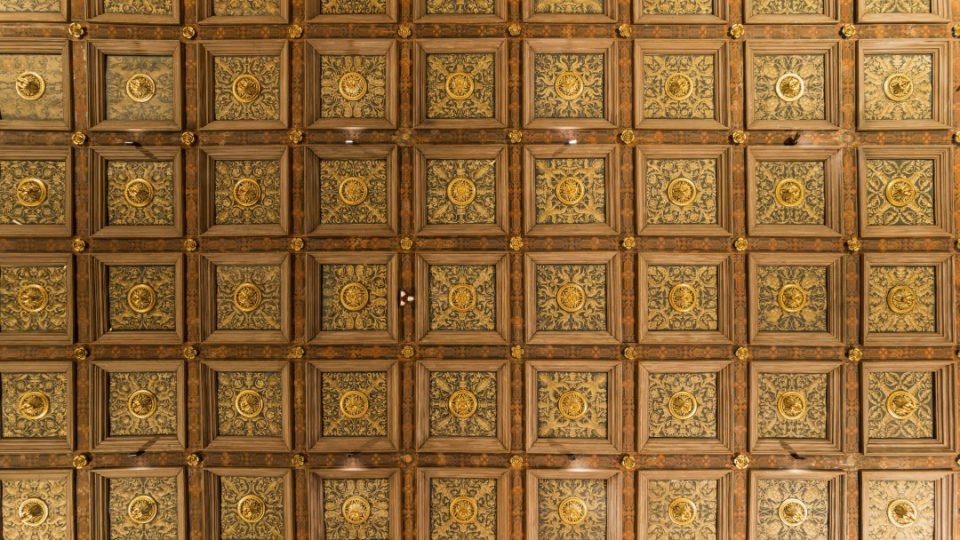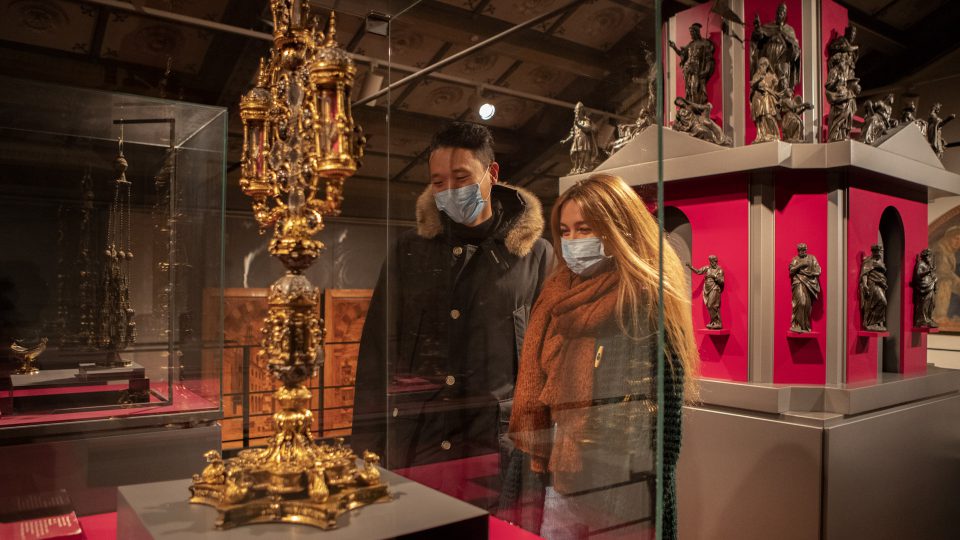Manuscript codes and valuable print books
The Antonian Library of Padua originated in the first half of the 13th century. Its history is intertwined with that of the community of the conventual Franciscans of the basilica of Saint Anthony. They have been the custodians of the sanctuary since the Middle Ages. Together with other cases unique in Italy among the ancient Franciscan libraries, it has remained substantially intact up to our times, avoiding raids, systematic dispersions, and state confiscations. The first nucleus of the book collection is certainly linked to the educational activity started in the small original convent of Saint Anthony. The saint was not only a popular preacher but also the first Theology lecturer in the Order, with the approval of Francis of Assisi. Two documented donations are considered its “”foundation stones””: in 1237 magister Aegidius, canon of the cathedral of Padua, bound in his will to the friars a code containing the Sermones of St. Anthony (to be identified perhaps in the current ms 720, at the base of the ‘critical edition of the Antonian’s body of work); around 1240, cathedral’s canon Uguccione, nephew of the bishop of Padua Iacopo Corrado, donated the convent of the Saint a precious Parisian glossed Bible in 25 volumes, with miniatures by magister Alexander, head of one of the main ateliers in Paris. The collection grew through donations, bequests, and the work of internal copyists. The characterizing purpose of the library remained in fact the education of the friars for pastoral activity – especially preaching. Teachings of Philosophy and Theology were later added. They took place in via Scoti, in the Arts’ Faculty, entrusted to Conventual teachers (starting mid-15th century). Important impulses for the development of the Antonian Library came from: the establishment of the Faculty of Theology at the University of Padua (1363); the recognition in 1437 of the Conventual Studio of the Saint as Studium Generale, (university level); and finally, from the elevation of the internal Study to theological faculty in 1630, granted by Urban VIII at the request of the Venetian government (it lasted until 1772 and it allowed ten graduations every three years). The 19th century was a stormy one for the Convent of the Saint and the Library. 1810’s Napoleonic decree of suppression of religious institutes forced the friars to reduce their role. They became simple officiators and custodians of the Basilica up to 1826 when the community was able to reconstitute itself under Austrian rule. Another crisis arose from the annexation of Veneto to the Kingdom of Italy with the application of laws hostile to religious orders. The foresight of the librarian P. Bonaventura Perissuti after the arrival of the French in Padua in 1797, and the intervention of the Veneranda Arca di S. Antonio in 1810, were fundamental in preserving the Antonian Library, which would otherwise undergo the same suppression decreed for the religious community. The Antonian Library currently houses 828 manuscripts, about 600 of which are medieval (including 41 large choral books, with a series of illuminated antiphonaries and graduals from 1340-1360); 260 incunabula, 3200 16th century editions, and a remarkable collection of Hebraic editions. Attached to the Library and accessible for consultation by scholars is the Music Archive. The recent cataloging of its ancient collection records over 9000 compositions (particularly relevant are the 18th-century collections, which include autographs by Giuseppe Tartini).



